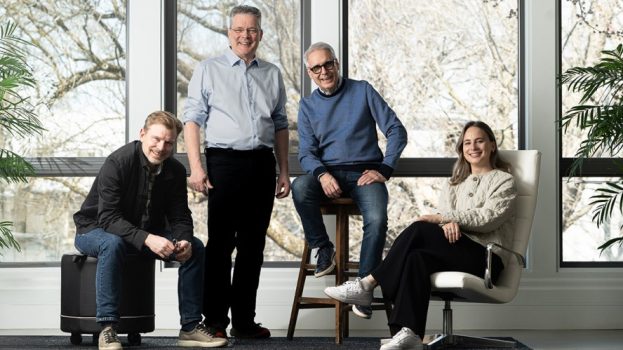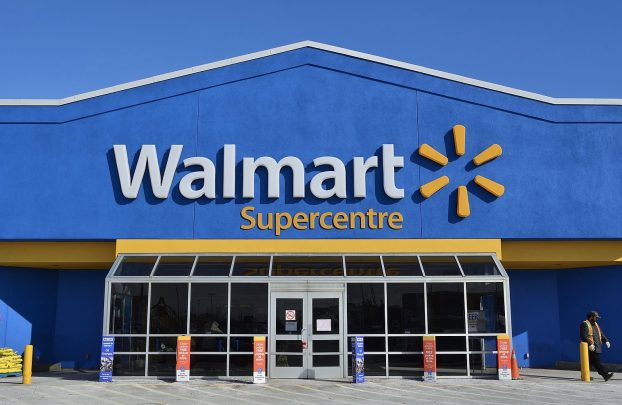
The Globe and Mail has revealed the winners of this year’s Canadian Young Lions and Young Marketers competitions.
Announced at yesterday’s CMDC Media x Innovation Summit, teams of two were given 24 hours to respond to a brief from a non-profit client (48 hours for entrants in the Film category). The teams – made up of staff under the age of 30 currently employed by an agency or in a marketing department – had their work judged by a panel of industry veterans.
The brief for the Print, Film and Digital competitions came from Climate Action Network. The non-profit, which pushes for action to combat climate change, is celebrating its 30th anniversary this year, and entrants were tasked with raising awareness among Canadian voters to take action and to encourage political leaders to put climate change at the top of their priority list.
The brief for the Media and Marketers competitions came from Kids Help Phone. Marketers were tasked with inventing a product, service or proposition that contributed to both a brand objective for their company and for the strategic objectives of Kids Help Phone. In Media, competitors were tasked with growing the charity’s youth interactions by 2021.
The full list of winners can be found below. The Gold winners in each category have been awarded a trip to this year’s Cannes Lions Festival of Creativity to represent Canada in the global Young Lions competition.
Film
Gold
Michael Romaniuk, art director, Zulu Alpha Kilo
Thomas Zukowski, copywriter, Track DDB
While posts about the impacts of climate change can get a lot of engagement on social, they tend to not actually repair icebergs, block pollution or regrow forests, as this video illustrates before encouraging viewers to visit Climate Action Network’s website to learn about re-world actions they can take.
[iframe_vimeo video = “332445815”]
Silver
Emily Ferraro, copywriter, Anomaly
Mat Cruz, art director, Anomaly
Gold
Justin Luu, art director, Taxi
Lorne Heller, copywriter, Taxi
Getting tagged in a photo tends to signal that a person was present or involved with a particular moment. By showing the tags that users will recognize from social media, the goal is to show that if Canadians can “be there” for the planet by pushing for climate action, they can be part of a more positive future.
Silver
Oskars Trinitis, art director, Grey Canada
Cory Hansen, copywriter, Grey Canada
Bronze
Sébastien Forget, copywriter, Cossette
Renaud Belles-Isles, designer, Cossette
Digital
Gold
Jordan Gladman, art director, Anomaly
Alex Boland, designer, Sid Lee
From time to time, internet users will be asked to solve a CAPTCHA to prove they are, in fact, a human and not a program. One way a CAPTCHA does this is by asking people to identify images like cars or street signs, but this campaign would instead ask Canadians to identify impacts of climate change. After proving they “know the problem,” users would be served ways to do something about it, with links to contact local politicians or sign a pledge.
Silver
Sammy Lo, art director, Sid Lee
Emma O’Neill, content creator, Sid Lee
Bronze
Corey Way, creative director, Abacus
Ryan Dawson, art director, Abacus
Marketers
Gold
Christian Alaimo, marketing manager, PepsiCo Canada
Jacob MacDonald, marketing manager, PepsiCo Canada
To encourage men to be better role models for younger generations, Gatorade will replace its green water bottles and towels – ubiquitous sights on the sidelines of all levels of sport – with blue ones that signals support for the “G-Code,” a code of conduct that promotes men asking for help when they need it.
Silver
Alexander Levy, assistant marketing manager, PepsiCo Canada
Alannah Lipsey, associate marketing manager, innovation, PepsiCo Canada
Bronze
Kevin Degruijter, brand manager, Bud Light, Labatt Breweries of Canada
Alyssa Sudac, senior marketing communications manager, Telus
Media
Gold
Alessia Grosso, media manager, Cossette Media
Robert Ebach, programmatic strategist, Jungle Media
While most youth are more likely to reach out to an organization like Kids Help Phone after they have been exposed to difficult situations, research suggests that teaching kids coping strategies will better equip them to handle the situation. One of the most common coping strategies is creating an imaginary friend, so this initiative would see Kids Help Phone’s platform be given the additional capability of allowing kids to create an avatar representing that imaginary friend. Counsellors could then interact with children through that avatar, teaching them way to navigate everyday situations.
Silver
Antoine Nguyen, media strategist, Touché
Anne-Sophie Vachon, strategist, Touché
Bronze
Laura Donaldson, director marketing services, Mindshare Canada
Kenon Mak, senior manager, digital investment, Mindshare Canada



























